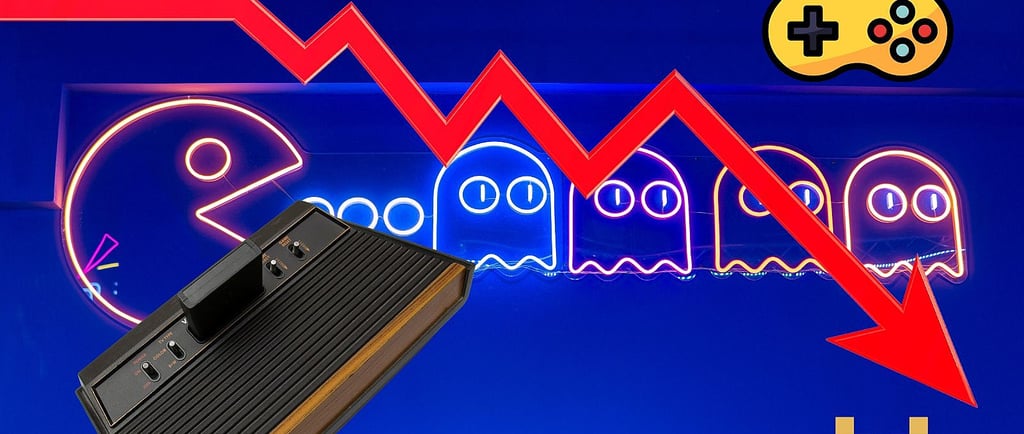American Video Game Crash of 1983
Blog post description.This essay examines the events that led to the American Video Game Crash of 1983—a pivotal moment that nearly destroyed the gaming industry. It traces how the boom of the late 1970s, powered by the Atari 2600 and arcade hits like Pac-Man and Space Invaders, gave way to market oversaturation, poor quality control, and a flood of low-effort titles. Highlighting infamous examples like E.T. The Extra-Terrestrial, the essay explores how greed, confusion from knock-off systems, and lack of standards eroded consumer trust. It also considers how stronger QA measures and innovation could have prevented the collapse, turning the 1983 crash into a lasting lesson on quality, restraint, and rebuilding trust in the gaming industry.


The year 1983 proved to be a turning point in the history of video games. What started off as this exciting and promising industry filled with new ideas quickly turned into a mess of subpar games, financial troubles, and a whole lot of disappointment.This downward spiral of events, became known as the American Video Game Crash of 1983.
The late 1970s was fueled by the success of the Atari 2600 console and arcade cabinets like Pac-Man and Space Invaders. What quickly followed was an explosion of innovation as developers pushed the boundaries of technology and imagination to captivate audiences worldwide. However, beneath the surface of this seemingly endless growth we saw a series of factors that would ultimately contribute to the industry's downfall.
In my opinion, one of the primary reasons for the crash was the oversaturation of the market with low-quality games. As the popularity of video games soared, numerous companies rushed to capitalize on the trend, flooding store shelves with hastily produced titles of varying quality. The lack of quality control and play testing allowed for many subpar games to hit the shelves which led to an overall sense of dissatisfaction. A prime example of this was "E.T. The Extra-Terrestrial" that failed to meet consumer expectations and broke the trust of gamers and industry experts. “E.T.” wasn’t the only reason for the crash though, the Atari 2600 had over 900 games with the majority being unplayable and poorly made (1). To further add to the video game crash of 1983 was that many companies, such as Coleco and Sears also created their own knock-off systems which confused consumers and further over saturated the market (1).
The question of whether the American video game crash of 1983 was unavoidable is still a topic to this day. The various economic and technological factors created a perfect storm that seemed almost inevitable in hindsight. Looking back in history, the rapid expansion of the market’s lax quality control mixed with emerging technologies, set the stage for the catastrophic collapse.
There are several measures that could have been taken to potentially save the video game crash. One such measure is the implementation of a more rigorous quality control standards to ensure that higher quality games reached the market. By setting up a more strict QA process and making sure games met certain standards for gameplay and graphics, companies could have kept consumer’s trust. This QA process would've helped prevent the market from getting too crowded with mediocre content.
Moving past 1983, it was essential for companies to prioritize quality, innovation, and collaboration to ensure the long-term success of the video game industry and regain consumer trust. The American video game crash of 1983 serves as a reminder of industries in the face of unchecked growth and complacency takes a toll on consumers and players alike.
(1) The American Video-Game Crash of 1983
https://online.academyart.edu/d2l/le/content/59440/viewContent/2371793/View
